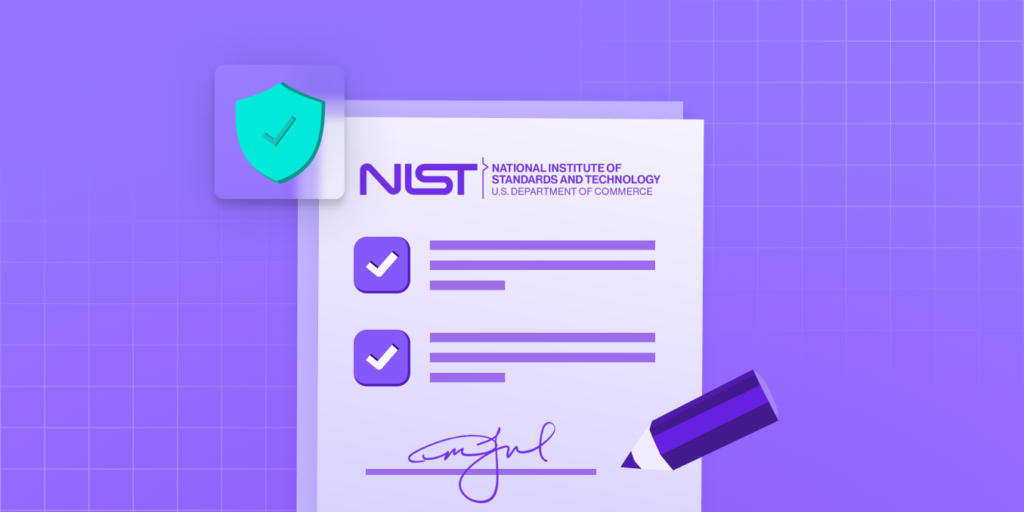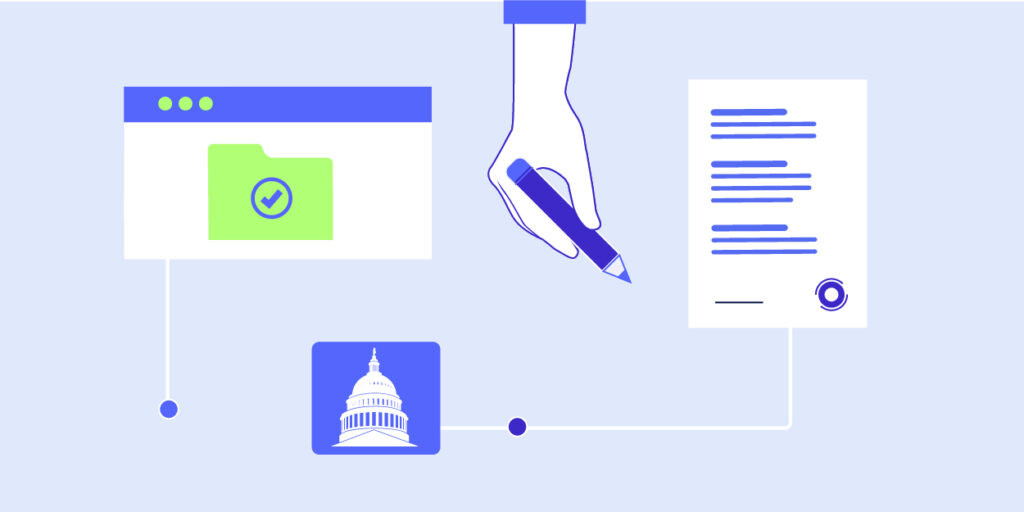NIST CSF Summary
“The NIST Cybersecurity Framework (NIST CSF) is a set of guidelines and best practices designed to help organizations manage and reduce cybersecurity risk. Read and learn to implement and reach your security and business goals.”
The NIST Cybersecurity Framework (NIST CSF) is a set of guidelines and best practices designed to help organizations manage and reduce cybersecurity risk.

Intended to be used as a voluntary and non-prescriptive framework, it provides a high-level, flexible approach that allows organizations to tailor the framework to their specific needs. This is opposed to frameworks that dictate how to implement specific controls or technologies.
NIST CSF was developed by the US National Institute of Standards and Technology (NIST) in 2014.
It originally targeted critical infrastructure sectors. Today, many industries and organizations, from small businesses to large enterprises, as well as government agencies, use NIST CSF as a baseline for cybersecurity, and it is broadly applicable to all sectors.
NIST Functions
The NIST framework was originally organized into five high-level functions that represent the lifecycle of cybersecurity risk management:
- Identify – Understanding the business context, resources and risks.
- Protect – Developing and implementing safeguards to ensure critical functions are protected.
- Detect – Implementing systems to detect cybersecurity events in a timely manner.
- Respond – Having processes in place to take action in case of a detected cybersecurity incident.
- Recover – Developing and implementing plans for resilience and to restore normal operations after an event.
In 2024, NIST CSF 2.0 added a 6th function, Govern.
See more details below.
Why Should Organizations Follow NIST CSF?
NIST CSF is a valuable and widely-adopted framework for organizations looking to align their security strategy with global standards. It helps organizations demonstrate their commitment to a structured and comprehensive approach to cybersecurity as part of their business strategy.
Thanks to its broad, non-prescriptive approach, NIST CSF is considered a friendly framework to adopt. It can be customized to fit organizations of all sizes – from small businesses to large enterprises – and is not tied to any specific industry. The framework also allows organizations to tailor security controls to their specific risks and resources, focusing on risks that pose the greatest threat to operations.
For regulated industries, NIST CSF helps align with regulatory requirements like HIPAA and PCI DSS. NIST CSF itself is not a regulation, but many regulatory bodies and industries point to it as a guideline for achieving compliance, making it a valuable asset in legal and regulatory contexts
Internally, NIST CSF provides a common language for CISOs and security teams to discuss cybersecurity. They can communicate risks and strategies to the executive level and boards, bridging the gap between IT and business leadership.
Finally, NIST CSF emphasizes continuous improvement. As cyber threats and business needs change, the framework’s tiered and dynamic structure enable organizations to adapt and enhance their defenses accordingly.
What is NIST CSF 2.0?
NIST CSF 2.0 is an updated version of the original NIST CSF, released in 2024. It adds new additions and modifications to address the evolving cybersecurity landscape, technologies, and threats.
What’s New in NIST CSF 2.0?
The main additions introduced in NIST CSF 2.0 include:
- NIST CSF 2.0 is applicable to a wider range of organizations, including small businesses and those in various sectors beyond critical infrastructure.
- Governance is now a core component, focusing on the policies, procedures and processes that guide cybersecurity risk management across the organization, linking business priorities to security goals.
- NIST CSF 2.0 provides enhanced guidance on managing third-party and supply chain risks, which have become a critical focus area due to incidents like the SolarWinds breach.
- Ensuring software development is secure, given its importance in the software supply chain of many organizations.
Who Needs to Follow NIST CSF and NIST CSF 2.0?
Any organization concerned with cybersecurity risk management, regardless of size, industry, or geographic location, can implement NIST CSF. It’s particularly beneficial for organizations seeking to improve their cybersecurity practices in a structured and repeatable way, without the prescriptive nature of traditional standards.
This includes the following organizations and industries:
- Critical Infrastructure – NIST CSF was initially developed for organizations in the US critical infrastructure sectors, such as energy, transportation, finance, healthcare and telecommunications. These sectors are foundational to the economy and national security, and disruptions in their operations can have widespread consequences.
- Private Sector – NIST has been widely adopted by organizations across various industries, including enterprises and businesses of all sizes. NIST is flexible and can be adapted to their specific needs.
- US Government Agencies – NIST CSF is voluntary but is used by federal agencies to complement mandatory standards.
- International Organizations – NIST CSF is a US-based framework, yet many global organizations have adopted it due to its flexible and non-prescriptive nature. In addition, international companies that do business with the US or seek to align their cybersecurity posture with global best practices often implement the framework.
NIST CSF Implementation Tiers
NIST provides organizations with a structured approach to managing and reducing cybersecurity risk.

The structure is based on Implementation Tiers, which help organizations understand their current cybersecurity posture and guide on improvements. There are four Implementation Tiers:
| Tier # | NIST CSF Name | Explanation |
| Tier 1 | Partial | No complete formal process to management risk |
| Tier 2 | Risk-Informed | Beginning of coordinated efforts to manage risk |
| Tier 3 | Repeatable | Formalized and consistently implemented risk management processes |
| Tier 4 | Adaptive | Continuous improvement of cybersecurity posture through assessments and adjustments |
NIST CSF Profiles
In addition to Implementation Tiers, NIST CSF also introduces Profiles. These are customized representations of an organization’s cybersecurity posture, intended to further helping align cybersecurity efforts with business objectives and risk tolerance.
Organizations create two key profiles: a Current Profile, which reflects their existing security state, and a Target Profile, which defines the desired future state of cybersecurity maturity. By comparing these profiles, organizations can conduct a gap analysis to identify areas for improvement and prioritize actions. The profiles provide flexibility, allowing businesses to adapt them based on regulatory requirements, industry needs, or operational environments.
The determination of these profiles should be a collaborative effort, involving cybersecurity teams, business leaders, risk management, compliance officers and external stakeholders. Each group contributes expertise to ensure that the profiles balance technical security needs with overall business goals.
Profiles can be further customized into sector-specific, capability-based, or risk-based profiles. This allows tailoring strategies for various industries, risk tolerances and functional areas like cloud security or critical infrastructure.
How to Use NIST CSF
NIST CSF provides a structured approach for improving cybersecurity postures across industries. Here’s how to effectively use the NIST CSF:
Step 1: Understand the Structure of the NIST CSF
The framework consists of three main components:
- Core – This is a set of activities and outcomes divided into six main functions: Identify, Protect, Detect, Respond, Recover and Govern. Each function is further broken down into categories and subcategories that define specific cybersecurity tasks.
- Implementation Tiers – These tiers describe how well your organization manages its cybersecurity risks and integrates the framework into its processes. They range from Tier 1 (Partial) to Tier 4 (Adaptive).
- Profiles – A profile aligns the framework’s functions, categories, and subcategories with your organization’s unique needs, helping you prioritize cybersecurity activities.
Step 2: Assess Your Current Cybersecurity Posture
Assess your current cybersecurity practices against the NIST CSF’s Core components:
- Identify
- Protect
- Detect
- Respond
- Recover
- Govern
Map out what’s already in place and identify gaps in each area.
Step 3: Define Your Target Profile
Create a target profile. This is a set of desired cybersecurity outcomes that align with your organization’s objectives, risk tolerance and business needs. This profile is a customized version of the framework tailored to your unique environment.
Step 4: Implement and Prioritize Improvements
After identifying gaps, prioritize actions based on risk. Use the framework’s categories and subcategories to guide what needs to be improved. Ensure that resources are allocated efficiently to address high-risk areas first. For example, if you find weaknesses in the Detect function, prioritize implementing better threat monitoring systems.
Step 5: Monitor and Evolve
Cyber threats are constantly evolving, so regularly review and update your implementation of the NIST CSF. Periodic reassessment of your risk profile, security measures and emerging threats will ensure that you remain proactive against risks.
Step 6. Communicate Across the Organization
The NIST CSF is designed to bridge communication between technical and non-technical teams. Use the framework to explain cybersecurity risks and strategies to your board, executives and other stakeholders. This helps secure the necessary buy-in and resources for your cybersecurity efforts.
Implement NIST CSF with Checkmarx
When implementing the NIST Cybersecurity Framework, organizations should consider integrating tools like Checkmarx One.
Checkmarx One provides a comprehensive application security solution, helping secure application from code to cloud while building devsec trust. Secure development and deployment are part of all NIST CSF functions and Checkmarx helps achieve them.
By embedding Checkmarx into the SDLC, organizations can proactively address risks related to insecure code, improving their overall cybersecurity posture and supporting a more secure environment as they work towards their Target Profile.